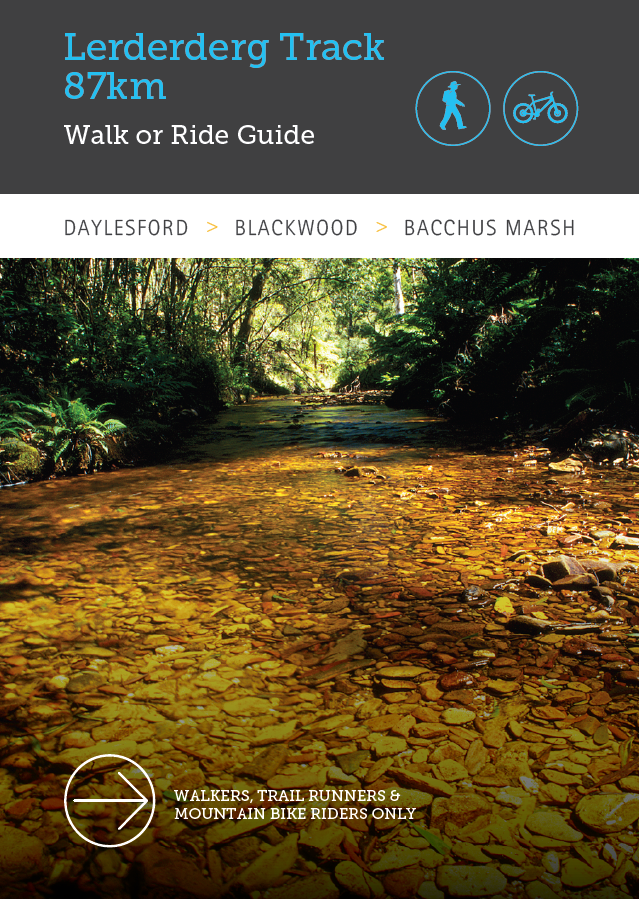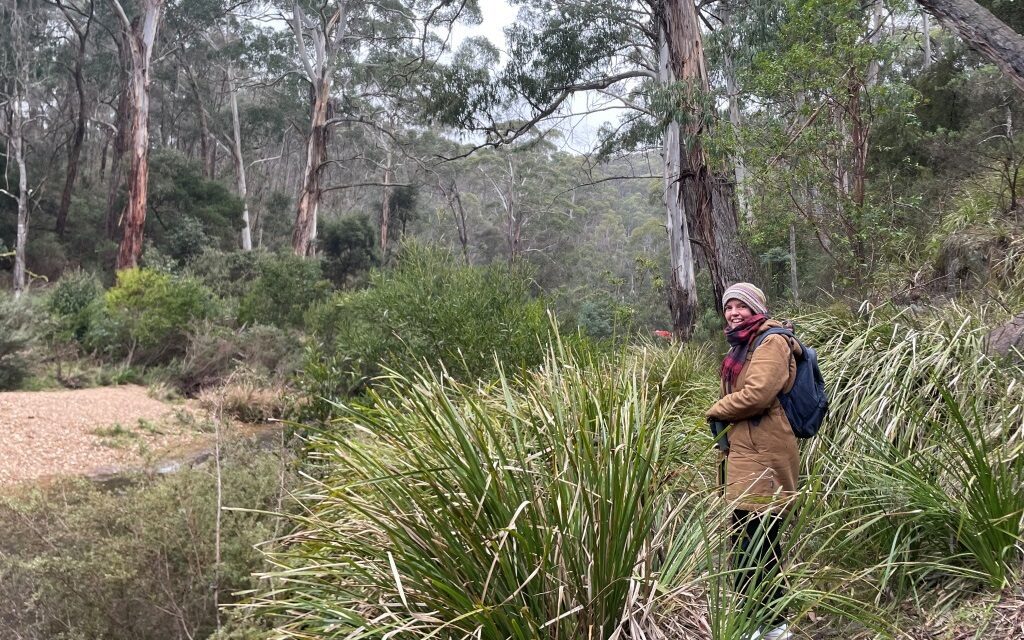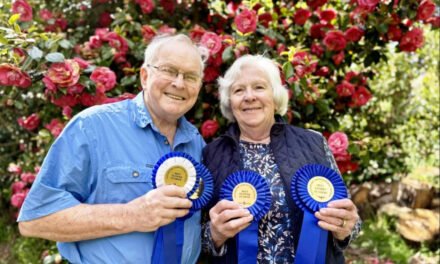Tanya Loos
Whether you walk the length of the Lerderderg Track from Daylesford to Bacchus Marsh, or just a short section, one thing is constant – change. Geological forces have shaped a route that climbs from 103 to 813 metres, crossing a huge rainfall gradient and an array of landscapes.
Walkers move from dry open forests near Daylesford and Bacchus Marsh, to tall messmate and mountain gum stands, through damp gullies and along the fern-lined Lerderderg River. Rocky ridges and gorges open to woodlands, each habitat hosting its own suite of species – some familiar, others rare or unique.
Season by Season
Seasonal variation makes repeat visits rewarding. Late winter to early spring glows yellow with wattle blossoms – from silver wattle high in the canopy to smaller acacias on the forest floor. Later come the orange “egg and bacon” flowers of Pultenaea, Dillwynia and Bossiaea. White becomes the dominant colour when snowy daisy-bush, musk daisy-bush and Victorian Christmas bush are in flower. Even bracken ferns put on a show after rain, sending up bright green fronds.
From June to January, wildflowers like triggerplants, cut-leaf daisies and blue pincushions appear, alongside terrestrial orchids such as greenhoods and cinnamon bells. Many plants are at the western limit of their range, while others – like the wombat bush-pea – are found only here.
Bird Encounters
The track’s steep ascents can give walkers a bird’s-eye view over the canopy – sometimes literally, as wedge-tailed eagles soar below. Square-tailed kites breed in the Wombat Forest each summer, while spring and summer bring migrants like rufous fantails, sacred kingfishers, satin flycatchers, orioles and cuckoos.
Other sightings are unpredictable: gang-gang cockatoos, with their creaking calls, or yellow-tailed black-cockatoos, whose haunting cry carries far. At night, campers may hear the powerful owl’s deep “whooo-hoooo”.
Wildlife Along the Way
Swamp wallabies are common, their thumping hops a familiar sound. Wombats are less often seen, but their cube-shaped droppings and scratch marks mark territory. Koalas can be spotted – often betrayed only by the scats at the base of a eucalypt.
Wombat Forestcare’s long-running surveys have revealed rare residents: brush-tailed phascogales in grassy forests, greater gliders in old gum-lined gullies, and the tiny eastern pygmy possum feeding on banksia and tea tree. Abandoned mining tunnels shelter critically endangered southern bent-wing bats, alongside little and large forest bats.
Reptiles thrive in rocky ridges and gorges. Skinks, including the southern water skink and black rock skink, bask in summer sun. Survey work has even uncovered populations of the endangered mountain skink, once thought confined to the Alps.
Even the waterways shelter treasures – the cool, clear streams of the Lerderderg River and creeks are home to endangered blackfish and mountain galaxias.
Tanya Loos is a local naturalist, author and environmental consultant who loves to work in the environmental not-for-profit sector. She is the author of “Daylesford Nature Diary” available from her website or from Paradise Books in Vincent Street, Daylesford.
Have you got any nature questions for Tanya? Send them in!

Editor’s note: This is an abridged version of an essay by Tanya Loos to be published by the Great Dividing Trail Association in the Lerderderg Track Walk or Ride Guide. The Guide will be a companion publication to the award winning Goldfields Track Walk or Ride Guide which covers the 210 km track from Ballarat to Bendigo via Daylesford. The Lerderderg Guide is expected to be published in October.





